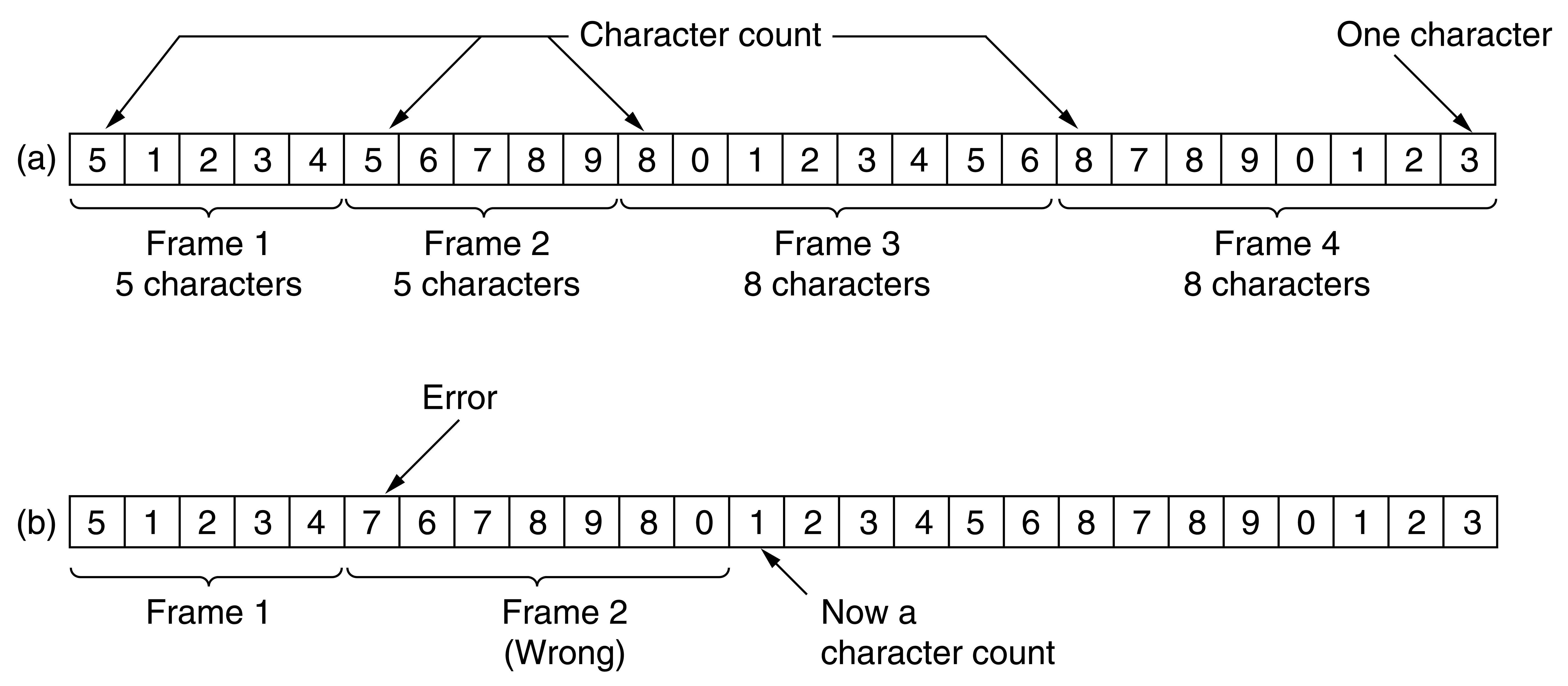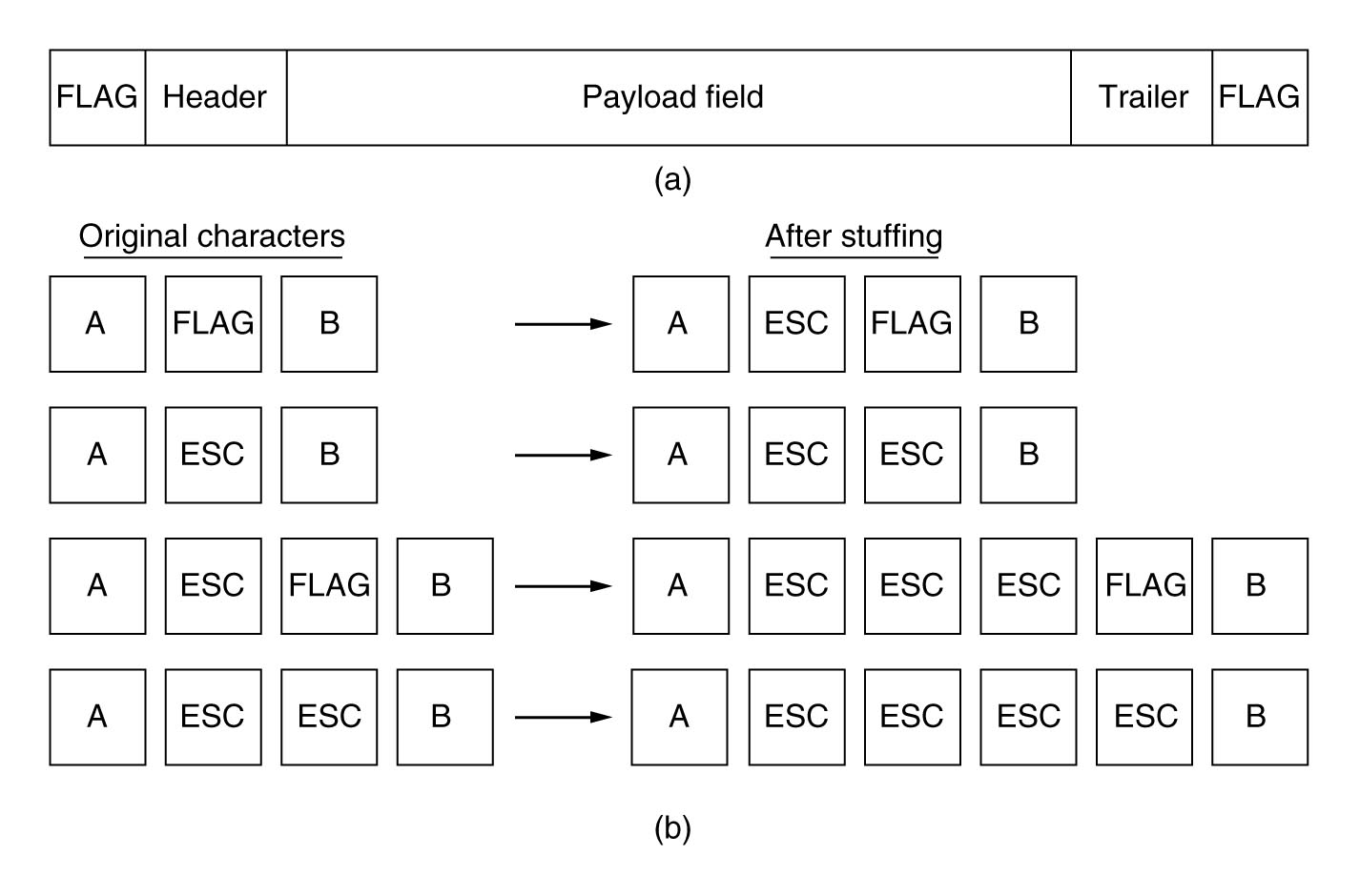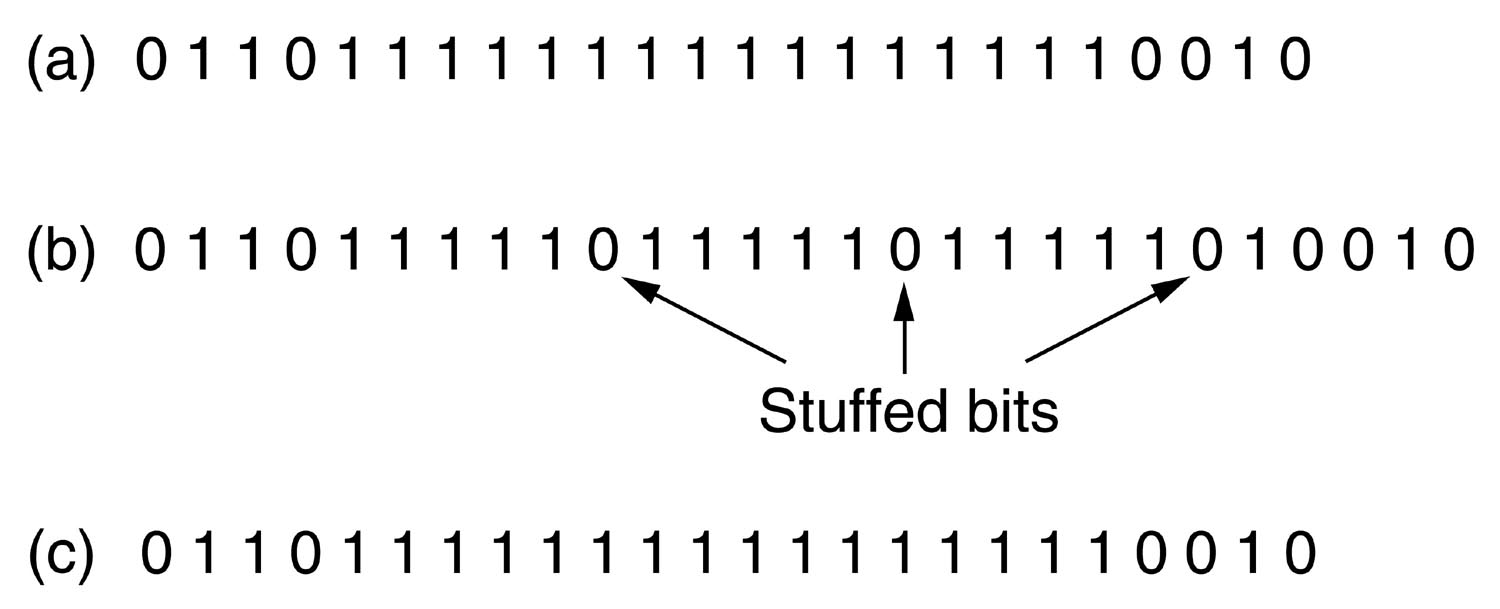3.1.2 Framing
How does receiver detect start and end of a frame?
Listening on a wire, nothing may be sent for long periods.
How do we avoid "reading" the thermal noise as data?
Time gaps between frames
Like spaces between words.
Won't work. Transmission delays may remove some gaps
and introduce new ones.
Character count
Field in header gives no. of chars in frame.
Shown in (a) below.
Char count includes the counting character itself:

Errors
Problem shown in (b).
Transmission error changed 5 to 7.
All frames now out of synch.
Even if we detect error,
we have no way of recovering - of finding where next frame starts.
Checksum
Note on detecting error:
There will be an
overall check of the frame when it gets through
(see "checksum" methods later), so normally we do
know that the frame was bad.
We do not accept any random stream of bits.
The issue is can we find the next frame.
Each frame starts with special start and end bytes
(
flag bytes).
Here will imagine it as same byte, FLAG.
After error, can always find start of next frame.
See (a) below:

Q. What if flag byte itself is in the data?
Probably won't happen for text data, but could easily
happen with
binary data.
A. Insert special escape byte (ESC)
before each FLAG in data.
Removed at far end.
This is called
byte stuffing
or
character stuffing.
Q. What if ESC itself is in data?
A. Insert another ESC before it.
See (b) above.
De-stuffing recovers original chars.
What if control bytes themselves get corrupted?
Q. Say ESC byte gets corrupted by noise.
Detect pre-mature end-of-frame.
Or FLAG byte gets corrupted and frame runs on too long.
A. Frame checksum figures this is bad frame.
Can still find next frame by looking for next FLAG.
At most lose 1 or 2 frames.
Error-detection in general
Q. What if
all ESC and FLAG bytes get corrupted?
A.
All error-detection and correction methods only work below a certain error rate
Byte stuffing specifies char format (e.g. 8 bits per char).
To allow arbitrary no. of bits per char,
use stuffing at
bit-level rather than at byte-level.
Each frame begins and ends with bit pattern
01111110 (6 1's)
If 5 1's in a row in data, stuff a 0 in
so will never be 6 in a row.
Stuff it in always - whether the next char was going to be a 1 or not.
De-stuffer removes the 0's after any 5 1's.

(a) Original data.
(b) Stuffed data transmitted.
(c) De-stuffed data received.
Might use
all these methods:
Character count, start and end flags,
and checksum.


